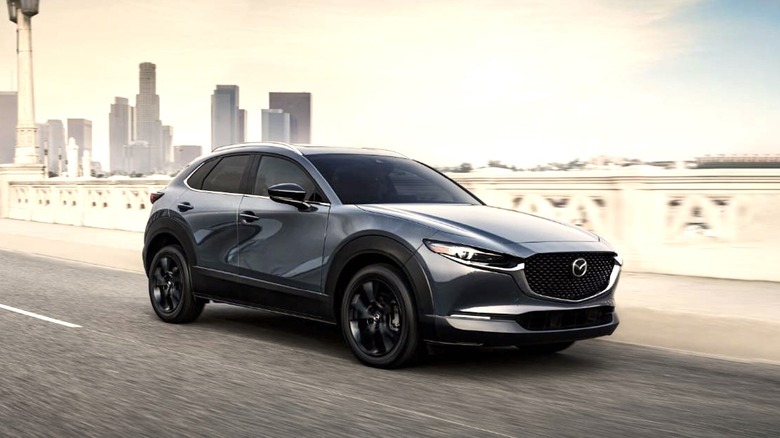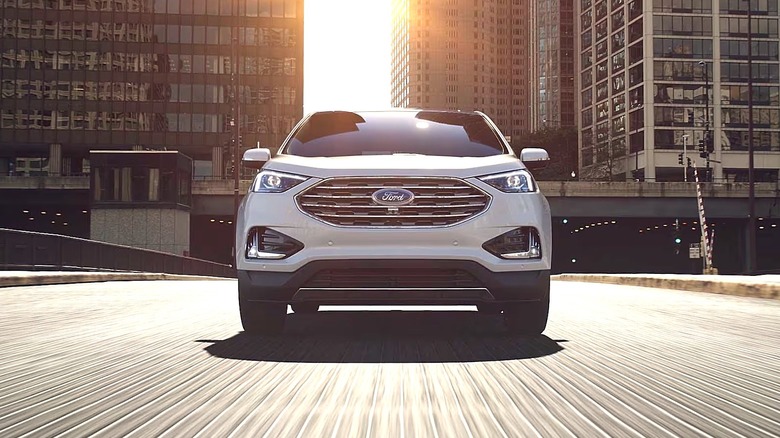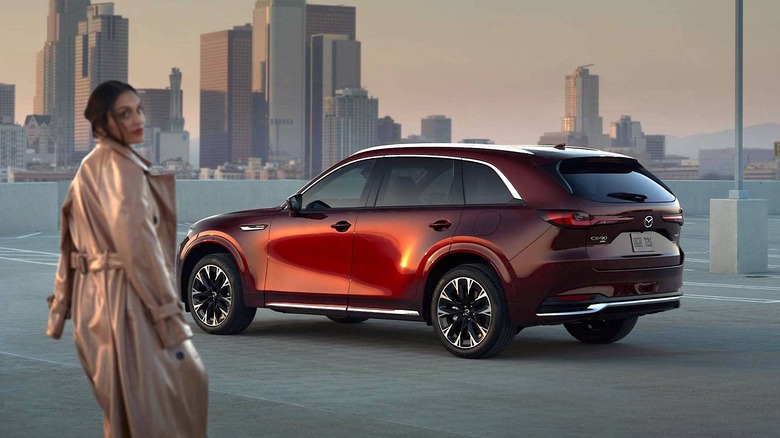The Relationship Between Mazda And Ford Explained
Mazda has long been one of the most recognizable automobile brands on the planet, with the Japanese manufacturer having spent the better part of the 100-plus years since its founding producing reliable vehicles for multiple international markets. Given the brand's continued popularity, Mazda may well prosper through the century ahead too.
As it happens, the manufacture of automobiles was not actually the primary focus of Jujiro Matsuda's business when he founded the Toyo Cork Kogyo in 1920, with the company indeed focusing instead on the production of cork. It wasn't until the 1930s that the company began making automobiles, though Mazda quickly became one of Japan's premiere automakers over ensuing decades — one who has experienced as much success in North American markets as it had in Asia.
As for Mazda's success in the United States, the brand rose to prominence in the 1960s along with other Japanese automakers like Honda and Toyota. Though the automaker's powerful Cosmo Sport essentially put the company on the radar of American drivers, the Mazda name still may not have lasted long in the U.S. if not for a surprising alliance with one of America's most iconic brands, Ford Motor Company. The team up was indeed one of the more surprising undertaken by two automobile brands, and you may be surprised to learn it actually lasted for several decades. Here's what else you need to know about the relationship forged between Mazda and Ford.
The Ford partnership was born out of necessity for Mazda
As Mazda's story goes, the company experienced near meteoric success in the United States in the 1960s. The American marketplace quickly became a major source of income for the Mazda brand outside of Japan. However, by the 1970s, the Japanese automaker's dependency on its U.S. revenue stream had become an unexpected problem in part because the decade's fuel shortage was leading to higher prices at the gas pump, making Mazda's gas guzzling rotary engines more expensive to operate for owners, and thus less far less desirable.
As Mazda's U.S. market share began to suffer, financial strain ensued, with the company seeking an alliance that could help it keep a foothold in America. It indeed found a willing financial partner in one of the country's oldest automakers, Ford Motor Company. Perhaps understandably, Ford's initial investment in Mazda was relatively modest 7% stake, but by the end of the decade, the American manufacturer had more than doubled down on its capital tie up, claiming a near 25% stake in the Japanese company.
As much as it may have looked like a hostile takeover from the outside, Ford never took a full ownership stake in Mazda. Instead it used its financial sway to lay the groundwork for a fruitful collaboration that found Mazda showing it ways to manufacture smaller cars faster and cheaper than Ford ever had. Concurrently, Ford helped the Mazda brand remain a prominent fixture in its own backyard market.
Ford has since moved on from its relationship Mazda
The partnership betwen Ford and Mazda proved beneficial through the '80s, and over time led to the collaborative development of popular builds for each manufacturer, including Ford's best-selling Ranger pickup, the Mazda 626, and, of course, the beloved Ford Courier, among many others. In 1985, the partnership would even produce the earliest days of what would become AutoAlliance International, an assembly plant collaboration founded in Flint, Michigan, for the purpose of producing models from both brands.
With Ford and Mazda continuing to trade ideas and develop new models, business remained solid for each for the better part of the next decade. However, Mazda once again found itself facing dire financial difficulties in the 1990s, when a declining Asian economy left it facing serious debt. Thankfully, Ford again stepped in to help Mazda stay afloat, boosting its stake in the company up to 33.4%.
Though the Ford and Mazda partnership would continue for nearly two more decades, the American automaker never increased its ownership stake in its ally's business past that '90s investment peak. In 2008, Ford would unexpectedly be the manufacturer dealing with financial woes, as the global economy teetered perilously on the edge of collapse. The financial strain led the American automaker to rethink its investment in Mazda, with Ford moving to unload its shares in the company that same year. Ford had trimmed its ownership stake to a mere 3% of Mazda by 2010, and four years later would sell off its final shares, ending its partnership with the Japanese automaker in 2014.
These days Mazda is partnering with Toyota
With Ford bidding "sayonara" to its longtime Japanese partner, Mazda would once again find itself going it alone in the automobile manufacturing arena. The company would not maintain its independent status very long, however, striking up an even more unexpected partnership by the end of the 2010s. Said partnership is with Toyota, and if you think it was unusual that an American automaker would throw in with another Asian manufacturer, the idea of competing Japanese auto brands finding common ground for a collaboration is likely enough to make your head spin.
Still, the companies announced the joint venture in 2018, dubbing their partnership "Mazda Toyota Manufacturing, USA, Inc." The collaboration between two of Japan's biggest automakers was actually happening on U.S. soil, with MTM plotting to build a massive manufacturing plant in Huntsville, Alabama, capable of producing as many as 300,000 units per year, designating a 50/50 blend of brands.
The plant was completed in 2021, with production promptly ensuing on Toyota's Corolla Cross, and the Mazda CX-50 going into production the following year. As of this writing, the collaboration appears to be going well, with Mazda and Toyota continuing to roll vehicles off their side-by-side production lines, and continuing to share technologies that are not only making their vehicles better but keeping them more than competitive in the American auto market.



